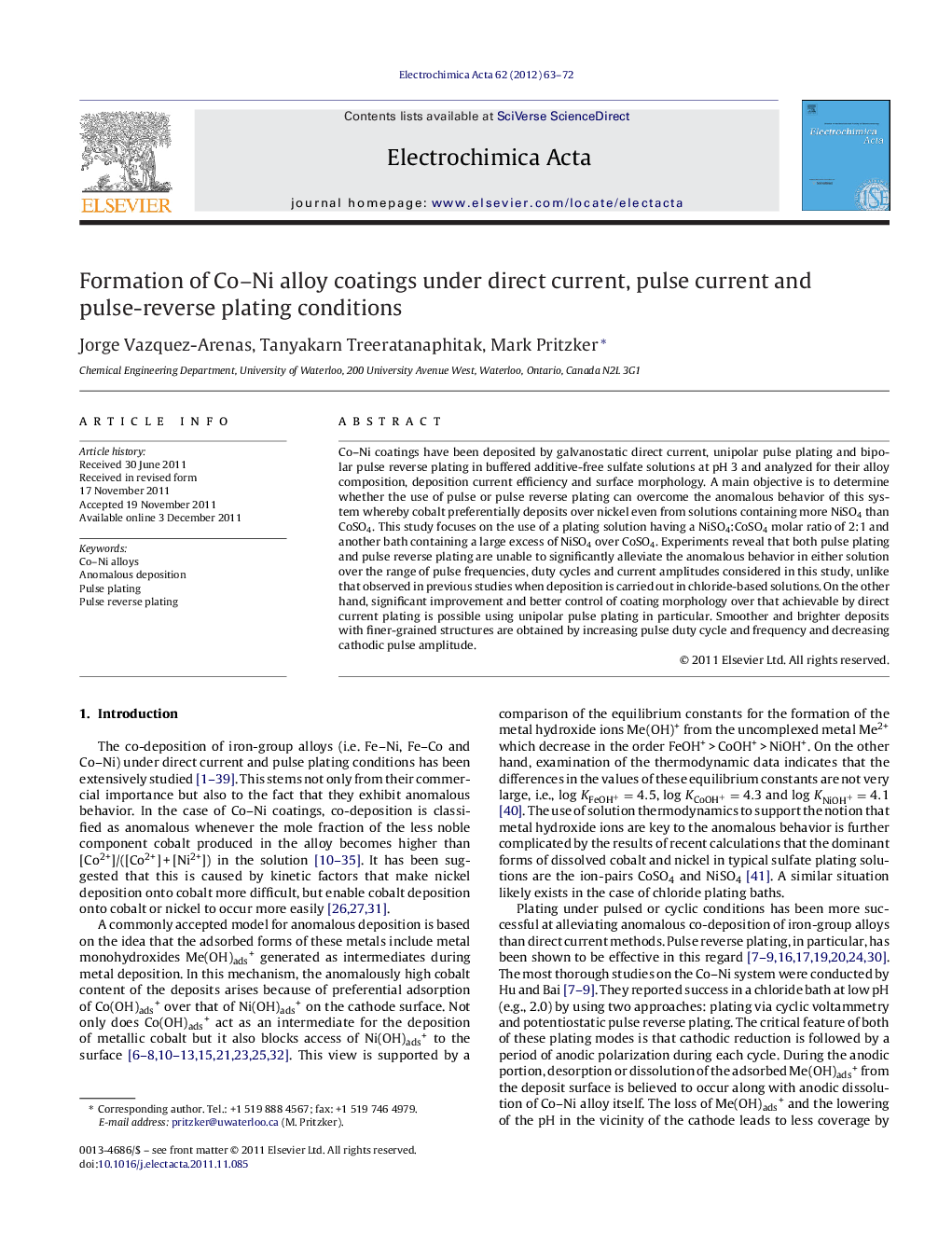| Article ID | Journal | Published Year | Pages | File Type |
|---|---|---|---|---|
| 189024 | Electrochimica Acta | 2012 | 10 Pages |
Co–Ni coatings have been deposited by galvanostatic direct current, unipolar pulse plating and bipolar pulse reverse plating in buffered additive-free sulfate solutions at pH 3 and analyzed for their alloy composition, deposition current efficiency and surface morphology. A main objective is to determine whether the use of pulse or pulse reverse plating can overcome the anomalous behavior of this system whereby cobalt preferentially deposits over nickel even from solutions containing more NiSO4 than CoSO4. This study focuses on the use of a plating solution having a NiSO4:CoSO4 molar ratio of 2:1 and another bath containing a large excess of NiSO4 over CoSO4. Experiments reveal that both pulse plating and pulse reverse plating are unable to significantly alleviate the anomalous behavior in either solution over the range of pulse frequencies, duty cycles and current amplitudes considered in this study, unlike that observed in previous studies when deposition is carried out in chloride-based solutions. On the other hand, significant improvement and better control of coating morphology over that achievable by direct current plating is possible using unipolar pulse plating in particular. Smoother and brighter deposits with finer-grained structures are obtained by increasing pulse duty cycle and frequency and decreasing cathodic pulse amplitude.
